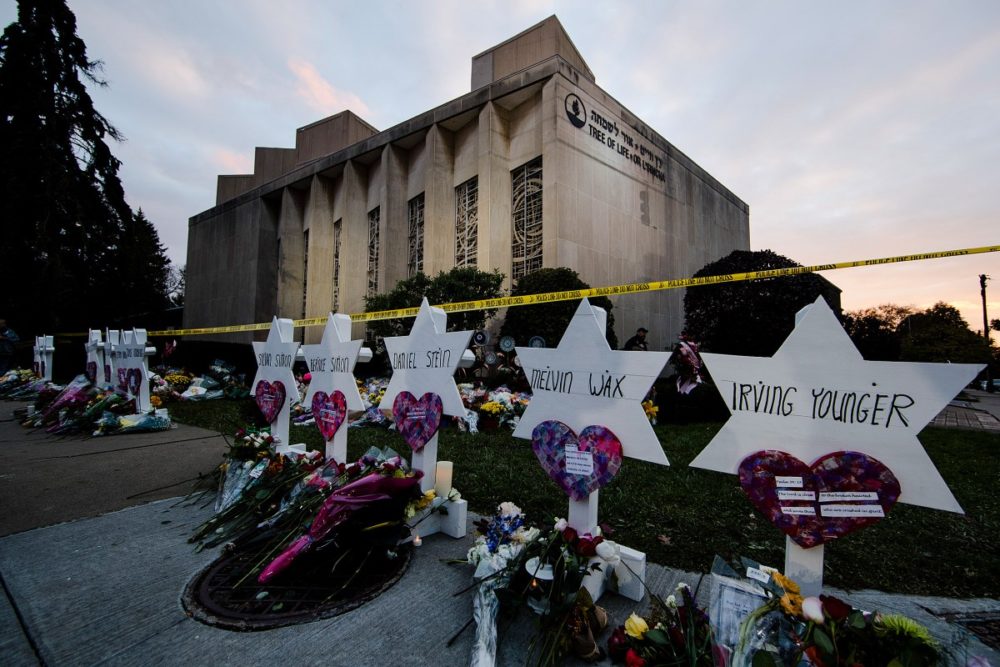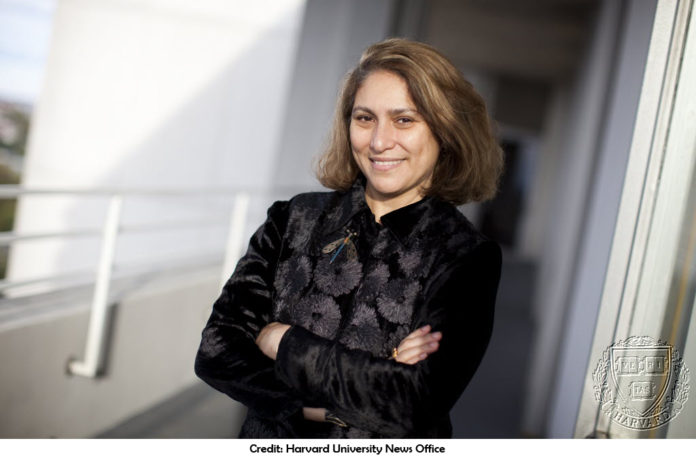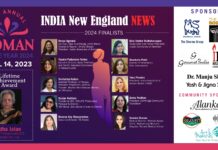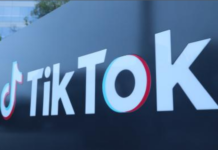By Alvin Powell
Harvard Staff Writer
With 11 people killed in a Pittsburgh synagogue, racially motivated shootings in a Kentucky store, and bombs in the mail, it seems like ethnic, religious, and racial hate are increasingly running unchecked in America.
Harvard leaders expressed shock and sadness this week over the attacks and called on the University community to come together to fight division and bigotry. In comments at Harvard Hillel on Sunday, President Larry Bacow urged his audience to combat hate with good deeds and kindness and to understand that, though people may feel helpless, they can show their power by voting for leaders who’ll unite the country.
Mahzarin Banaji, Richard Clarke Cabot Professor of Social Ethics and chair of Harvard’s Psychology Department, is an authority on bias that can run so deep that we don’t even recognize it in ourselves. Banaji spoke with the Gazette about the roots of prejudice, about public perceptions that it is more acceptable today, and about the relationship of traditional biases to political divisions.
Q&A
GAZETTE: As an expert on bias, what do you see when you survey our society’s landscape today?
BANAJI: It depends on what the comparison is. Today’s landscape compared to what? Fifty years ago, 100 years ago? If the comparison is distant, we don’t look bad at all. But I suspect you are asking this question, as we all are, because of the moment we seem to be in today, and the comparison being pre-2016. Of course, any social scientist will tell you that it is awfully difficult to draw any causal link between a single person, even a president, and the actions of an entire society. But we can say a few things. If you ask me about our perceptions of the state of our country on matters of intergroup relations, the answer is clear: We are not looking as good as we did a few years ago.

Americans today believe that the Trump election has led to a worsening of race relations in the United States. A Pew poll showed that in 2008 — during the Obama administration — about 9 percent of Americans said that the presidential election had led to a worsening of race relations. In 2017, 60 percent of Americans believed that the presidential election has led to a worsening of race relations. You don’t need a statistical test to say that’s a noteworthy difference.
A colleague at the University of Kansas, Chris Crandall, studied 300-something Americans, equal supporters of [Hillary] Clinton and [Donald] Trump. Both groups — both the Clinton and Trump supporters — agree that the Trump election has ushered in greater tolerance of prejudice. The standards for what counts as prejudice have changed, according to him. One could argue that these are mere perceptions. [But] as a psychologist, I would say that perceptions matter; what people believe is their reality, and that matters.
Then there are data on the frequency of incidents like hate crimes. The ADL [Anti-Defamation League] reports a stunning statistic: a 57 percent rise in anti-Semitic incidents in the U.S. in 2017 compared to the previous year. This includes bomb threats, vandalism, assaults, and anti-Semitic posters on campuses. And the recent killings in the synagogue in Pittsburgh suggest that it’s not just bomb threats.
The NAACP’s reports also confirm that anti-black, anti-Semitic, anti-gay, anti-Latino crimes each have risen. Hate crimes rose in 2016 by about 12 percent. And that seems to be an underestimate because the data are from 38 of the largest cities of the country. Ninety of the largest cities didn’t report a single hate crime, so that percentage is likely to be an underrepresentation.
GAZETTE: You have spoken and written about implicit bias being deeply rooted. Where does this come from?
BANAJI: This may sound controversial, but when we think about how bad things are today, we have to remember that in most instances on many metrics of peace, we are better off today than we’ve ever been. Just ask my colleague Steve Pinker. But why are we better? Because we are able to bring sharp critical focus in evaluating ourselves, to regularly say that we are not the people we wish to be. And if we are to look less embarrassed when future generations view us, we have a lot of work to do. So I don’t plan on resting on any laurels. That seems to be sufficient to some — the water fountains have been desegregated, I was once told — but to continue to be critical of just how bad things are today compared to what they could be.
But improvement is not linear. The 20th century is a good example. When you take a bird’s eye view of history, sure, we are becoming better people in many ways. I was born 10 years after colonial occupation of India, so I’m acutely aware of just how different my life has turned out because I was born in a self-governed India. This fact is regularly on my list of gratitudes.
But whether it is colonialism or slavery or Japanese internment camps, the underlying feature we must confront is that social group lines matter. And historically and even today those lines are sharp. Life is simply not the same for a woman who, by the throw of the biological dice, is born in Jeddah — although she can now drive, yeah! — or Geneva.
What I’ve studied are the remnants of old beliefs and attitudes that still remain with us, even though they are invisible to us, even though they are implicit. We need to dig to discover them. But they are there, and responsive to the right probe. In the 1930s, a large number of non-Jewish Americans would just tell you, to your face or at least on a survey, that Jews were mercenary and shrewd. A very small number will say that today. But has the stereotype gone from our consciousness? I’d say it’s there, invisible to the holder of the belief, until it seems OK to say so. Bernie Madoff comes along, and then, boom, seemingly out of nowhere you can hear the stereotype in hushed tones in the halls of the most liberal of institutions.
Where does this all come from? The mechanism — to experience fear in response to group difference — is a very old feature of humans. Of course, humans have cooperated across group lines for a very long time. But we also are the descendants of people who looked at group difference, assumed that it meant danger, and ran or killed. Some of those roots of tribalism pop up in us today, even though our world has changed so much. Today, if you are a business and you can’t approach groups that are vastly different than your own, you are out of business, because you failed to outsource.
The fear that led us to go backwards, toward a worse place, through the Trump election is not just an American phenomenon, although it is sobering that even the so-called greatest democracy in the world can so quickly become attracted to fascist ideas. The fear of new social arrangements is producing similar reactions in so many parts of the world. My own country of origin, India, is a sad example given the political party in power. Most recently, of course, there was the election in Brazil, and the rise of anti-Semitic and anti-immigrant sentiments in France and Germany.
I suspect that this has to do with deep globalization. I don’t just mean globalization in terms of who’s doing business with whom alone, but the entry of different kinds of people into our societies, and the slow, tentative accumulation of power among those who didn’t used to have basic rights, let alone power. There is no question that this is a new moment. And I see our behavior as a reflection of some of those deep-rooted, old fears.
GAZETTE: So, you see people not like you gaining power that people like you — or even you — used to have?
BANAJI: You see it in subtle ways. Maureen Craig and Jennifer Richeson did a study in which they reminded half the people that by the year — 2050? I forget exactly which year it was — America would be minority majority. They showed that unaffiliated Americans leaned more Republican and expressed more conservatism if they had been reminded of that fact, compared to a group that had not received that fact.
That’s how little it can take to move an attitude, at least a little. So, when you add to the mix life circumstances — people who have had personal setbacks, who are mentally ill, who generally have higher levels of anxiety and fear, who may be intoxicated, who live in a state where you can buy a gun easily, who may be writing anonymously, who might feel legitimization by their peers, who may not have familiarity with outgroups, who have perceived grievances — my father could retire at the age of 60 and buy a boat; why can’t I? — you put these ordinary variables together, and you have a dangerous cocktail.
GAZETTE: What’s the relationship between implicit bias and open prejudice? Are they two different animals, or can one become the other in the wrong environment?
BANAJI: That’s a very good question, and we struggle with how to describe the relationship. On the surface, it would look like the two are different. One is conscious, and the other you don’t even know about; we have to go through some contortions to reveal it.
To the scientist who studies them, they feel very different, and yet the two are connected. There’s almost always a correlation between the two, whether it’s small or quite significant. A person who happens to be higher on explicit, avowed bias toward, say, African-Americans or Jews or sexual minorities is also a person who is higher on implicit, hidden bias.
You might think about the implicit stuff as fluctuating inside your head at some level. You slam a lid on it with your rational, deliberate, conscious thoughts. But personal environments and life circumstances, societal events like who’s in power and what our leaders are saying, can lift the lid. One piece of data we can’t run away from: The individual who sent bombs to the Democratic leadership did wear a “Make American Great Again” hat. He wasn’t a neutral observer of society.
So yes, I think our stereotypes, our prejudices lie around in some dormant form, and particular events in the world can allow them to escape. I think we’re seeing that right now. Why else would the nice town of Harvard, Mass., see swastikas on a city rock in the days after the election? And that’s not a single, solitary event.
To folks like me, I would also warn that we can’t be susceptible to “availability bias,” an increase in our perception of the overall frequency of hate, based on the salience and recency of events like mailed bombs and synagogue killings. We must pay attention to the data.
GAZETTE: When does open prejudice blossom into hatred intense enough to motivate killing?
BANAJI: When somebody sends off bombs in the mail or kills people in a synagogue, those are individual acts that appear to come out of a deep mental instability.
The very fact that millions of us have implicit biases that do not manifest in these extreme forms tells us that a unique set of conditions have to be present for it to reach this form. But those conditions can be ordinary, even trivial. Is there a Dick’s Sporting Goods in the neighborhood? Did I just lose a job to somebody with darker skin? And, of course, there are demographic factors such as one’s age, gender, urban/rural living, SES [socioeconomic status], owning a passport or not, and so many others that predict outcomes like the direction of voting in elections and for ideas like Brexit.
To show you how irrational fear of others can be, a study done in Hungary is among my favorites. People were asked about how they felt about a particular immigrant group, the Piréz, and something like 60 percent said they were opposed to immigration by Piréz into Hungary. But the Piréz were a fictional group, just made up for the purpose of the survey.
GAZETTE: Is our current political polarization an expression of this? Has politics become a new deep dividing line, where you see the other person not as a member of your society with a different view, but as an actual outgroup?
BANAJI: In my view, absolutely. From the 1970s on, we’ve been segregating by politics. A book called “The Big Sort” showed that if you look at where people are living in the country, it used to be purple. Sure, we divided by socioeconomic status, but liberals and conservatives used to live in the same neighborhood, marked by a particular SES. Now, for every socioeconomic layer, there is a more liberal and more conservative neighborhood. So people are sorting themselves not just into socioeconomic groups, but by what they believe. That segregation has been going on for a good 40 years or so. And it is absolutely my belief that politics is the new religion. We do see each other as outgroups with our God being superior to the other person’s God.
(Reprinted with permission from the Harvard Gazette.)














